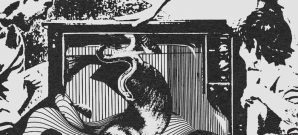 As the future of instrumental music in the indiesphere is being gradually swallowed up by post-rock, let it be said that there’s more to it than that. More than just a wall of swirling noise or overwrought effects, noise-pop could be considered a step backwards, but that step has a bounce in its stride.
As the future of instrumental music in the indiesphere is being gradually swallowed up by post-rock, let it be said that there’s more to it than that. More than just a wall of swirling noise or overwrought effects, noise-pop could be considered a step backwards, but that step has a bounce in its stride.
Letting a mini-orchestra roam free in a conventional rock pasture, The Flowers Of Hell freshen up sounds from the 60’s, 90’s, and now through lush, sweeping melodies and refocused pop-rock. The arrangements are enlightening, not darkening. This isn’t shoegaze, it’s stargaze.
The Flowers Of Hell is an interesting project, as it’s essentially a small all-star team of side players and arrangers from semi-famous bands. Their pedigree includes British Sea Power and The Early Years, while production was done by Tim Holmes of Death By Vegas. Clearly, a lot of experience in peripheral mixology is built into the group. It explains why they’re able to nimbly mesh classical instruments with modern noises into a mix that’s a little more refined from what you’d expect out of a typical indie outfit.
The Flowers Of Hell’s self-titled album is full of long, deliberate compositions that build like a sunrise as instruments assemble gradually and more intensely throughout each piece. The most involved of these is the thirteen-minute track, "Opt Out". It begins with a simple electric guitar strum and gets a buzz, then drums, trumpets, and electronics fall in and out until it crescendos as a light, yet complex, ballad jam. This style of laid-back density mix through a cool, airy sound is the recurring theme on the album.
While The Flowers Of Hell sport some engaging sounds, this album is slightly repetitive in its reliance on swirling electronics to amplify relatively basic guitar and drumming. On top of this, its orchestral capacity is large, but as the centerpiece, doesn’t flourish particularly astonishingly. It seems the collective is still developing its objective, and could produce truly moving arrangements, but this album is just a stepping stone to that level.


















